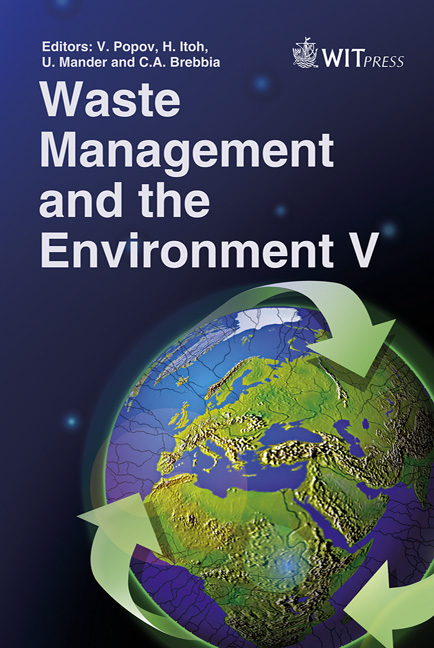Development Of A Mathematical Model For The Composting Process
Price
Free (open access)
Transaction
Volume
140
Pages
12
Page Range
191 - 202
Published
2010
Size
671 kb
Paper DOI
10.2495/WM100181
Copyright
WIT Press
Author(s)
F. Gironi & V. Piemonte
Abstract
Composting is a powerful process for the treatment of the organic fraction of municipal solid wastes (MSWs), yard and green wastes. The process is performed aerobically by means of specific micro organisms that utilize organic matter for their metabolism producing, as metabolites, water, carbon dioxide and humus (a solid substance that can be utilized for agricultural uses). Composting of organic solid residues has a positive environmental impact because it reduces the volume of solid wastes to be landfilled and, consequently, the production of methane (often characterized by low recovery efficiency) due to the anaerobic degradation of organic solids. Indeed, the release of methane in the environment is very dangerous because the effect of methane as greenhouse gas is about 20 times higher than that of carbon dioxide. In this paper, a mathematical model of the composting process is presented in order to predict its performance and to contribute to the solution of practical design problems. Energy and mass balance equations, with typical kinetic expressions for degradation of organic matter, provide the basis of the composting model. The process was split into two stages: in the first, the \“Running phase”, the substrate biodegradation reactions take place, while in the second, the \“Loading phase”, air and water are supplied to the composting reactor. The effects of the characteristic time of each phase on the BVS, oxygen and water concentrations inside the composting reactor were also studied. Keywords: mathematical model, aerobic composting, simulations.
Keywords
mathematical model, aerobic composting, simulations





